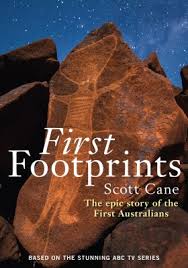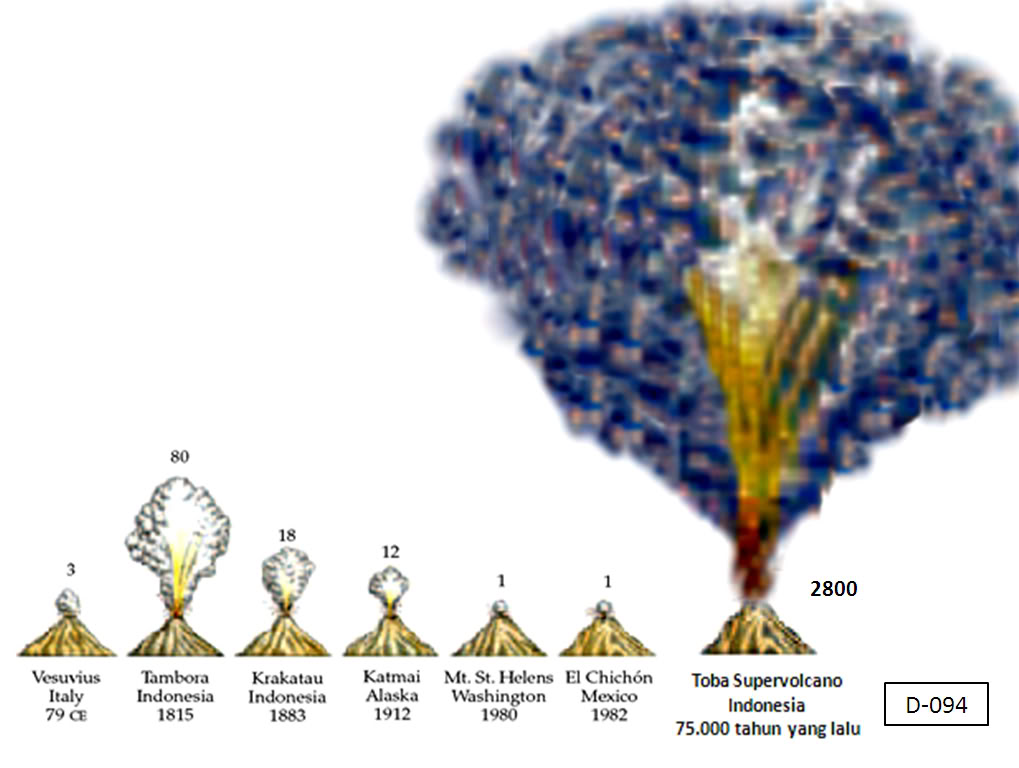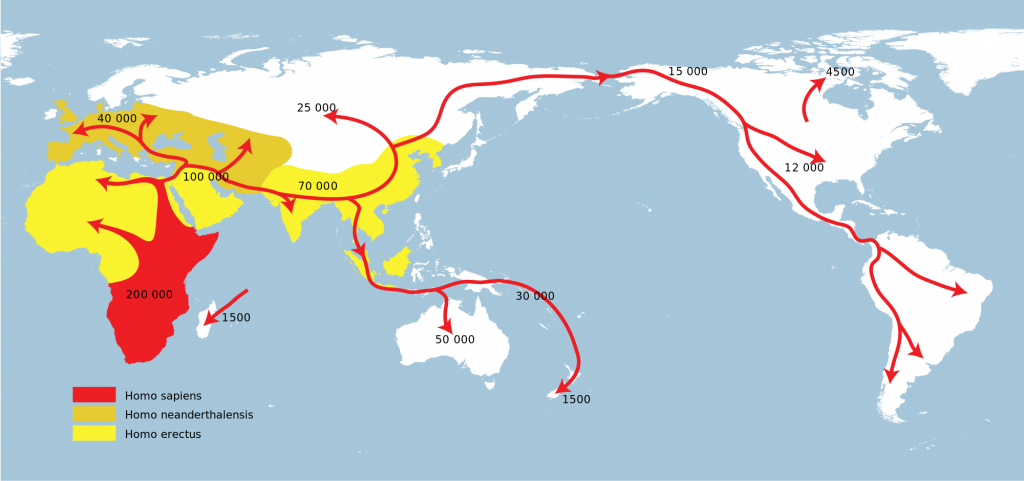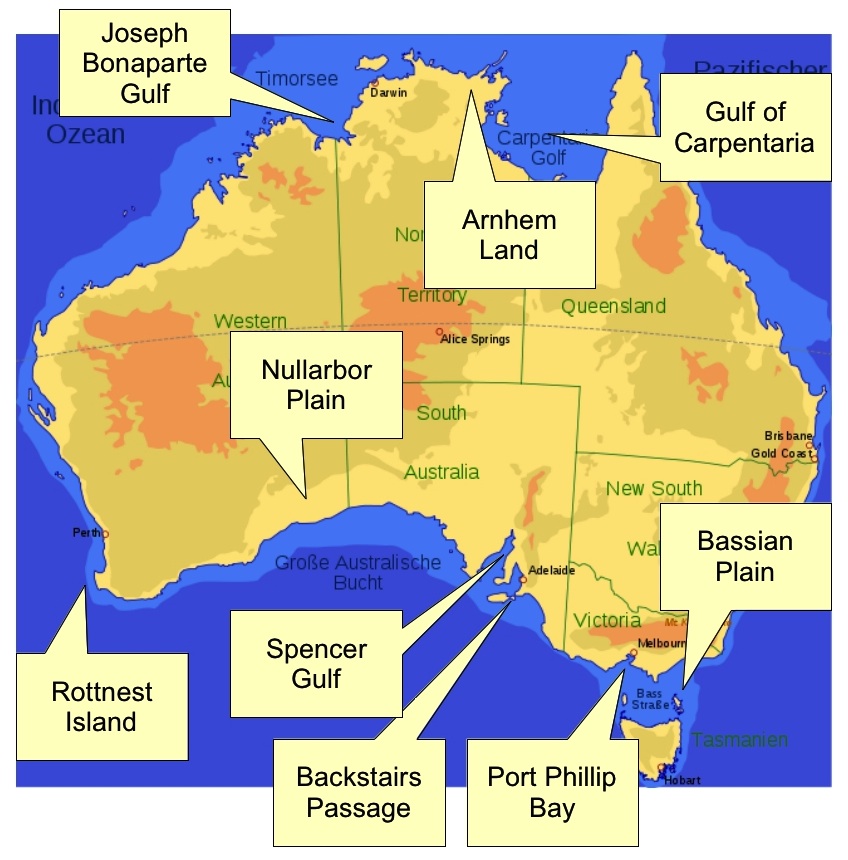 I have almost completed reading First Footprints: The Epic Story of the First Australians by Scott Cane. It is based on the recent TV series of the same name. So few Australians know much about the history of aboriginal Australia and reading/viewing a work like this inspires one to call out for making such knowledge a core part of every Australian school’s curriculum. It not only has the potential to encourage an unprecedented respect for our indigenous brothers and sisters, but also the hope of deepening our understanding of the way our environment changes and challenges its inhabitants over the long term.
I have almost completed reading First Footprints: The Epic Story of the First Australians by Scott Cane. It is based on the recent TV series of the same name. So few Australians know much about the history of aboriginal Australia and reading/viewing a work like this inspires one to call out for making such knowledge a core part of every Australian school’s curriculum. It not only has the potential to encourage an unprecedented respect for our indigenous brothers and sisters, but also the hope of deepening our understanding of the way our environment changes and challenges its inhabitants over the long term.
The story starts with the staggeringly incomprehensible eruption of Mount Toba in central Sumatra, Indonesia, around 74,000 years ago. It dropped up to three metres of ash over much of India and Pakistan. It pushed out a 40 metre tsunami that was registered in the English Channel. “It blew 3000 cubic kilometres of volcanic rock into the air, beyond the world’s atmosphere and at least 40 kilometres into space at a rate of about 10 million tonnes per second.”

Darkness covered much of the world; forests turned to grassland; extinctions occurred; temperatures fell; and a world already facing droughts from an emerging ice-age plunged into even more devastating “mega-droughts” and perhaps the coldest the earth has ever been in the past 125,000 years.
The human population suffered horribly — reduced, perhaps, to a population of 50,000 people in which there were as few as 4000-10,000 breeding females. (p. 13)
The first evidence for human settlement in Australia comes in the wake of this event. Human survivors downwind and east of the eruption may have been the first to arrive; or perhaps the first settlers belonged to those who began their trek from Africa and followed the southern Asian coastline till they reached here. The founding population of Australia came in a wave of around 1000 people — according to genetic research.

They were met with megafauna: 3 metre high kangaroos, 7 metre long “lizards”, 2 metre high “geese”, herds of “wombats” standing 2 metres at the shoulder, lions lurking in trees ready to pounce on prey below. One way to control wildlife threats was to burn the forests and long grass around their dwellings and so remove the cover for the predators. Aborigines have continued to use fire for the same purpose into modern times — clearing out the long grass to remove threats of snakes and expose the holes where edible goannas hid. Later more sophisticated “fire-farming” was developed and changed much of the landscape of Australia into liveable “gardens” of plots that were regularly recycled for hunting and foraging.
I’d love to talk also about the nomadic feats of these early colonizers, all that we can learn about them from their rock art, and the way they used “Dreaming” (collections of tales of myths) to hold their communities together and to even guide them across vast distances like topographical maps. But the real reason I began this post was to talk about something of interest to those of us who have grown up with the Bible as our “foundation stone” of “true myths”.
The Dreamtime and the Flood Myths
18,000 to 15,000 years ago retreating glaciers ushered in a “wholly new” (Holocene) era of a warmer and wetter world. Sea levels rose.
The ocean rose for 13,000 years. It was a flood of incremental magnitude and great variability but, in the longer scheme of things, the seas rose at an average rate of 1 centimetre every year. It was a relentless flood equating to over half a metre in a lifetime, with a lateral consequence of many kilometres over flat coastal plains across each generation. (p. 195, my bolding throughout)
But the rise was not at a constant steady pace. Some periods its rise was imperceptible. Other time it was “disconcertingly fast”:
At times, great swathes of the coast disappeared in front of people’s eyes. (p. 193)
There was a 300 year period around 14,000 years ago when it rose 15 metres.
Spasmodic periods of rapid rise alternating with very gradual rises continued until the seas reached their present levels around 1500 years ago.
On the Nullarbor Plain, at times of rapid rise, the sea moved inland at the rate of up to a metre a week. A person might see the sea move inland by 2 to 3 kilometres in his/her lifetime.
Territories were lost, subsistence regimes altered, spiritual locations and religious pathways drowned at sea. Across the northern coasts of Australia rapid sea level rise may have consumed up to 5 kilometres of land in a year. (pp. 200-1)
Now we come to the Flood Myths:
Rising sea levels were a global phenomenon of such proportion and human impact that they appear to have been captured in cultural memory: there are over 500 myths about great floods across the planet. The biblical flood may be one of them, the Australian narratives may be others. These narratives are of particular note as they invariably account for sea level rise in the context of the land that existed before it — they are myths of palaeo-environmental context, less about the formation of the sea as it is seen and might be understood in the present and more about the coast as it changed through antiquity. Together they form a remarkable body of religious lore that must be at least 6,500, if not 10,000, years old. These narratives are thus among the oldest known parables in the world. (p. 201)
As would be expected, the Australian myths of such floods are associated with the flattest country.
“The Gulf of Carpentaria was formed when a raft was dragged across the land and created a channel that filled with sea water.”
“Elcho Island, off the coast of Arnhem Land, was severed from the mainland when a stick was pushed into the ground and the sea rushed in.”
“Joseph Bonaparte Gulf was flooded when endless rains came and the sea rose, threatening to extinguish fire then maintained by mythological beings.”
“The Bassian Plain was drowned after children found a sacred object. The land gave way, the seas moved in and many people died.”
“Port Phillip Bay is described in mythology as a flat, fertile plain, inundated when a large storm blew up and the sea flooded in.”
“Backstairs Passage, between Fleurieu Peninsula and Kangaroo Island, was formed when an ancient mythical being ordered the waters to rise and drown his fleeing wives.”
“Stories of a great flood account for Spencer Gulf in South Australia, and a great fire swept across the ancient coastal plains of the Swan River and cracked the earth, letting the sea flood in and separating Rottnest Island from the mainland.”
“All desert Tjukurrpa [Dreaming] on the Nullarbor Plain relate to the emergence of the sea. The myth of the Wati Kutjara ends abruptly where the Two Men went into the water, via a soak at the Head of the Bight. They are immortalised as two pillars out to sea.”
“In another story, fire is almost extinguished by the rising sea — in an analogous manner to the account from the Joseph Bonaparte Gulf — while the aunty of those who saved it sat cross-legged on the plains pushing up a barrier in an attempt to stop the sea rising any further.”
“In another story, large numbers of mythological birds, embodying the People of the Sun and the Shadow, crossed the desert to build a rampart of spears.”

I have modified the image that Thomas Steiner put under the ”CC-by-SA 2.5” licence. http://commons.wikimedia.org/wiki/File:Australia_map.svg
I don’t believe the story of the flood in the Bible is derived from such ancient myths. Noah’s flood is a very late story drawing on other literature (Babylonian and possibly Greek, too) for theological and cultural identity purposes. One curious side-note here: the Bible associates the cause of the Flood with violence across the earth; the archaeological evidence (rock art) depicts the first wars in the wake of the advancing waters robbing them of traditional land-space.
If you enjoyed this post, please consider donating to Vridar. Thanks!

Neil, I cannot see some of the latest posts’ images, such as http://neilgodfrey1.files.wordpress.com/2014/01/australia_map-e1388695336190.jpg?w=831
They are blank, and when I click on them. I get:
— 403: Access Denied —
This file requires authorization:
You must be logged in
and a member of this blog.
Log in to proceed.
Try now.
Problem solved, thanks!
3 books for you [and maybe others] Neil.
1. “Out of Eden – the peopling of the world’ [2003] by Stephen Oppenheimer a DNA scientist who dates the colonisation of Australia in chapter 4 to around 60,000 years ago.
2. “The Archaeology of Australia’s Deserts” [2013] by Mike Smith who details who lived where and did what when why and how since about 40-50,000 years ago.
Excellent book [as is the first]
3. “Rock Star” the biography of Reg Spriggs the discoverer of the Edicaran first [pretty well] Precambrian fossil by his daughter in law [the book is at a mate’s place, I forget her name].
Reg also mapped the underwater valley of the River Murray the southern extent of which now lies under the southern ocean since the sea level rose about 10,000 years ago and drowned it and also separated Kangaroo Island from the mainland.
I mention number 3 cos near me is the site of the first major archaeological dig in Australia [c 1930s] at Ngaut-Ngaut, where people lived at least 8-12,000 years ago [that’s officially but obviously longer] when the Murray still flowed past the east of Kangaroo ‘Island’ when the ‘island’ was the southern extent of the mainland.
And the Ngarrindjeri people who lived at Ngaut-Ngaut [well sort of, actually their neighbours], and in the region, have stories describing how and why Kangaroo Island was formed and why the sea rose.
Like this:
http://www.murrayriver.com.au/about-the-murray/ponde-dreamtime/
[That’s the tourist version of course].
I’m not far behind you. I was wondering about you and what you might contribute to this when writing that post, so glad to see you have stepped in. Yes, Oppenheimer is in Cane’s bibliography and I followed up those leads at the time of reading that section. That led me to online searches to learn more about his status in the community and the place of his ideas — and that led to choices about whether to jump in and buy more books or wait till a more convenient time.
In the meantime I bookmarked several pages on delicious https://delicious.com/neilgodfrey/OIT-AIT for future reference. Looks like I’m going to have to learn a lot about the pros and cons of the two theories — “Out of India” and the “Aryan Invasion Theory”. I see that the heat is really on between these two camps. The AIT people apparently accuse the OIT ones of being modern-day Atlantis freaks. The OIT defend themselves as being scientific and not like Atlantis freaks. Sounds as vicious as the historicist-mythicist debates. 🙂
Can’t wait to get back to work and consult a leading linguist there for his input.
Thanks also for the other tips. I want to finish reading Bill Gammage’s The Biggest Estate on Earth first to clear the way before more works on this area.
All this stuff is so interesting and I really do hope it does work its way into school curricula. It has the potential of doing more for race-relations than anything else we’ve done (except Mabo).
Oo, nostalgia.
Many many years ago, almost before time began, well before I lived here, I was a senior high school teacher and decided that the history and sociology etc of indigenous Australians was worthy of treatment in the school.
Ah but how, by whom, with what perspective [and so on]?
Being a white fella, orthodoxly educated, I had no idea what to do but fortunately I knew and taught a few experts, mostly Ngarrindjeri but with a few other groups represented. A couple, at least, came from the stolen generation.
So they devised the course for me, with the help of Aboriginal Education Dept folk whose input was, hmm, let’s say mixed.
And the ball grew as it went downhill [downhill is good in my metaphor], others with special knowledge came in, local elders happily included themselves, musicians and poets and the like visited classes, we went to a couple of places, we had some weaving lessons [weaving is important in River societies, matter of fact we, spouse and I did a weaving course a couple of weeks ago] in the school with natural dyes which led into the topics of plants and ground and, of course, the animals were front and centre all the time. Holistic stuff. We even used a few books with some primary sources just like Bart and his mates don’t.
They learned [the schoolkids], enjoyed it and said so, racism is not natural it has to be taught, we learned, the ‘white’ teachers that is, I learned and then, natch, I had to move on, the school closed and to be honest I dunno what the situation is like now around the state but, judging from the tenor of the likely next government to be and the current Federal mob the prognosis ain’t healthy.
Speaking of prognoses –
A few years ago the federal government apparently decided to no longer support bilingual schooling — at least in the Northern Territory. Consequently hundreds, maybe thousands, of school readers that recorded in print up to a couple of dozen aboriginal languages were being discarded and doomed to be lost forever. As you can imagine, such a resource in many cases is the only or certainly one of the very few instances where many of these languages are preserved in a form for others to study, and for aboriginal communities themselves to actually read and share.
I have been involved with a Federal Government funded project to try to salvage as many of these as possible. The prototype of the results of our work can be see at http://laal.cdu.edu.au/
Were you involved in that?
Well done.
The stupidity of that decision to cut bilingual learning was boggling to my mind tho’ can’t say I was surprised.
The recent history of government intervention is following the well trodden dishonourable path of the past.
BTW are you aware of the works of David Horton? He edited the Aboriginal Map of Australia used by AIATSIS.
Maybe give his book, “The Pure State of Nature” Allen and Unwin 2000, a read, its on the same topic as Gammage’s book.
Cheers.
Yes, that map is well-known here. (I have been working with the LAAL project manager and technology support team as the metadata adviser and digitisation and digital repository coordinator for the project at Charles Darwin University.) Hopefully there will be another series of funding to continue to develop it all to a new level of professionalism, with opportunities for both researcher linguists and aboriginal peoples themselves.)
http://www.abc.net.au/indigenous/map/
http://web.archive.org/web/20141205115437/http://www.aiatsis.gov.au/asp/map.HTML
You seem knowledgeable about Australian Flood myths. I have read an account of the Kundagara myth that ends with two gods rescuing the people by blasting through the mountains, only to be disappointed by leading them onto a desolate plain. What happens next? How do they get rescued? (Or maybe you can direct me to a book that tells the end of this myth). Thanks.
Is there an alternative spelling for Kundagara? Are you sure it is an Australian aboriginal myth? Perhaps you could try to contact Scott Cane (author of book discussed in the post) through his publisher.
Sorry! My bad! “Kurangara” is the correct spelling. Thanks!
Was that account on from Answers in Genesis (https://answersingenesis.org/the-flood/flood-legends/australian-aboriginal-flood-stories/)? It sounds like a complete flood myth to me; many myths don’t seem to have neat endings of the kind we are used to. It ends with a desert waste before them and that sounds like a story about how those family groups came to be where they are today. Maybe taking your query to the NT museum (https://www.magnt.net.au/) or the ANU (https://ncis.anu.edu.au/) of Charles Darwin University (https://www.cdu.edu.au/study/indigenous-knowledges). If you do find anything new hope you return here to update us.
(Sometimes the myths have striking echoes to bible stories. Once I read about a man striking a rock (?) with a stick and water gushing out. That could be an embellishment of digging for water or it could be a spinoff from earlier generations being told bible stories by white visitors.)
Yes, you pegged the source. Sorry your reply got routed to spam, so I couldn’t find it. I was hoping the story had more to it than just ending with the people facing great disappointment. If I find anything more, I will post it here.
This is an old resurrected post, but just to throw something in here. It seems to me the most likely explanation of these types of myths is what Adrienne Mayor discusses regarding the ancient observations of fossils. It seems that all around the world people were observing fossils of fish and other sea creatures well inland, in dessert and even on mountain tops, and this was interpreted as evidence of a prior global flood.